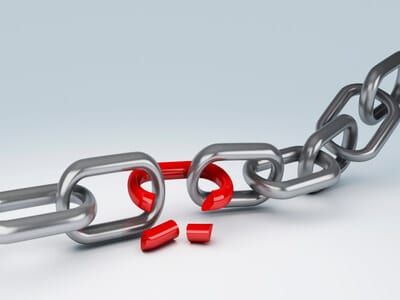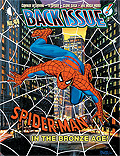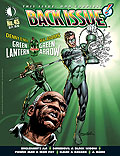Redartz: The years since the "Bronze Age" have seen quite a few changes in popular culture. Some of the most common features of daily life back then are all but forgotten today. Think rotary telephones, handwritten letters, and black/white televisions. Other elements of today's life were unknown in the 70's, such as smartphones and the internet. You may have noticed that manyof the changes revolved around science and technology. Although it still exists today, AM radio was a victim of technology as well, beginning with the rise of FM broadcasting. By the time digital music became common, AM had been largely relegated to talk radio and sports. And like most, I gravitated away from AM listening as FM offered cleaner music ("no static at all", as Steely Dan put it). That said, AM radio offered quite a lot of listening pleasure during the 70's, and today we will recall a bit of that.
My first exposure to AM was the local Anderson, Indiana radio station: WHUT. During the early 70's the station played top 40 hits, and was the station of choice on our school bus. Riding home after classes we would strain to hear Three Dog Night, Elton John and Grand Funk over the usual cacophony of yelling schoolkids. During the summer months, at the public swimming pool, I remember Paul McCartney's "Uncle Albert/Admiral Halsey" would echo across the water, courtesy of the dj at WHUT.
It wasn't long before my burgeoning love for pop music found greater fulfillment , via Casey Kasem and American Top 40. The same middle school friend who introduced me to comics also opened my ears to "AT40".
Every weekend through the rest of the decade and well into the 80's, I'd tune in to hear Casey count 'em down. Starting on Muncie, IN station WLBC, and later on several Indianapolis stations, the Billboard chart came alive every week, along with Casey's trivia and long-distance dedications. And the music was the big draw, even though there was somewhat greater static from the more distant Muncie broadcaster. Yet that fuzziness was part of the charm, and didn't seem troublesome at all.
By 1975 I'd gotten heavily addicted to comics, just in time to catch another treat on AM radio: the Fantastic Four Radio Show. Again courtesy of our local Anderson station, each week Stan Lee himself brought the FF to my ears through those little speakers on my clock radio. It only ran for 13 episodes, but somehow it seemed longer. The show featured a young Bill Murray as the Human Torch, and adapted some of the classic Lee/Kirby epics. I never missed it.
At about the same time period that I was tuning in to the FF, another radio show grabbed my attention and kept me glued each evening: the CBS Radio Mystery Theater.
And speaking of the commercials, that was another unique part of AM radio. The preponderance of local ads and low radio budgets made for some amusing (and sometimes pretty cheesy) commercials. I can still clearly recall an ad from the mid-70's that ran very frequently on Anderson and Muncie stations. It was for a local drive-in theater that showed, shall we say, more adult-oriented fare. But the commercial opened with the Surfari's "Wipeout" intro, and surf guitar line. This was followed by an invitation to visit the "Blackford County Drive-In; 9 miles north of Muncie on highway 3. Our inner car heaters make winter feel like summer". I'll be hearing that commercial in my head until my dying day, and maybe after.

One more little feature I'll mention about AM radio: a personal eccentricity, perhaps. During the evenings, when many local stations went off the air, the AM band became a place to pick up vague bits of broadcast from exotic locations all over, such as Des Moines, New York and Windsor, Ontario. WABC, CKLW, WLS and countless others. Again, the action of listening in the dark to these ghostly voices made them all the more evocative. Hearing those speakers, commercials, tunes, local newscasts- all fading in and out among the distant static was almost haunting, and very fun. I always heard you could pick up Mexican radio ( as per Wall of Voodoo), but never could myself...
Incidentally, you had to have an old analog tuning dial to do this best. Digital push-button tuning skips over too much, and you miss the fun of sweeping back and forth up and down the dial. Plus, you get the cool blue-green light illuminating the dial!
Hmmm, maybe I'll go upstairs late this evening and drag out that old transistor. Bet I can pick up WLW...




















































